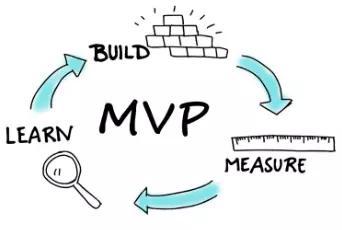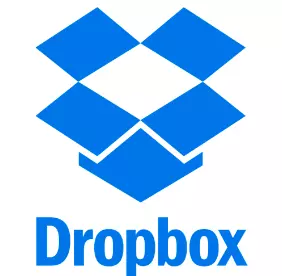Minimum Viable Product
Definition
A minimum viable product (MVP) is the most basic version of a product with enough features to satisfy early customers and test the market.
Description
A Minimum Viable Product (MVP) is a development strategy focusing on building a product with only the essential features required to satisfy early customers and gather feedback.

Source:www.google.com
The goal of an MVP is to test the product’s viability in the market, validate assumptions about customer needs, and identify areas for improvement. By launching an MVP, businesses can reduce the time and cost of development while getting early user feedback to inform future product iterations.
An MVP should have enough features to provide value to early adopters while minimising unnecessary development work.
Importance of Minimum Viable Product
Here are some bullet points highlighting the importance of Minimum Viable Product (MVP):
- Helps businesses to validate their product idea in the market
- Enables businesses to minimise development costs and risks
- Allows businesses to gather feedback from early adopters to inform future product development
- Helps businesses to identify whether there is a market demand for their product
- Allows businesses to prioritise features based on customer needs and preferences
- Enables businesses to launch their product faster, giving them a competitive advantage
- Reduces the likelihood of investing in unnecessary features
- Increases the chances of success for the product by addressing customer needs and preferences.
How to build a Minimum Viable Product?
Building a Minimum Viable Product (MVP) requires a structured approach to development. Here are some steps to follow:
- Define the core features: Identify the features required to deliver value to the customer and test your product idea.
- Prioritise the core features based on customer needs, market research, and feedback.
- Develop a prototype: Develop a prototype that includes the core features and allows for testing with early adopters.
- Gather feedback: Gather feedback from early adopters to identify areas for improvement and validate assumptions.
- Iterate and improve: Use the feedback gathered to iterate and improve the product, adding new features based on customer needs and preferences.
- Test the market: Launch the MVP to the market and gather feedback to inform future iterations and improvements.
- Monitor metrics: Monitor metrics such as user engagement, retention, and satisfaction to identify areas for further improvement.
- Scale up: Once the MVP is validated, scale up the product by adding more features and expanding the customer base.
Future Scope of Minimum Viable Product
The future scope of Minimum Viable Product (MVP) is promising as it continues to be an essential strategy for businesses to validate their product ideas, reduce development costs, and improve the chances of success for their products.
With the increasing adoption of agile and lean methodologies, businesses are increasingly adopting the MVP approach to develop and launch products quickly, test the market, and gather feedback from early adopters.
The rise of digital technologies, such as cloud computing and mobile apps, has made it easier and more cost-effective to build and launch MVPs. In the future, we expect MVPs to become even more important as businesses focus on delivering value to the customer, reducing development costs, and accelerating time-to-market.
Alongside this, artificial intelligence and machine learning advancements may enable businesses to develop more intelligent MVPs to better anticipate and address customer needs. Overall, the future scope of MVPs is promising, and businesses that adopt this approach will likely enjoy a competitive advantage in the market.
Example:
One example of a brand that successfully utilised the Minimum Viable Product (MVP) strategy is Dropbox. The company launched its MVP in 2008, a simple file-sharing service that allowed users to store and share files in the cloud. The MVP had limited features and was not yet optimised for mobile devices, but it allowed Dropbox to test the market and gather feedback from early adopters.

Based on this feedback, Dropbox was able to identify the essential features required to satisfy its customers and improve the product over time. Today, Dropbox is a leading cloud storage provider with over 500 million users worldwide, and it continues to iterate and improve its product based on customer needs and preferences.
FAQs
What is a Minimum Viable Product?
A Minimum Viable Product (MVP) is a development strategy that focuses on building a product with only the essential features required to satisfy early customers and gather feedback.
Why is an MVP important?
An MVP is important because it allows businesses to test and validate their product idea with early adopters while minimising development costs and risks. It also helps businesses identify whether there is a market demand for their product and whether the product satisfies the customers’ needs.
What are the benefits of an MVP?
The benefits of an MVP include reducing development costs and risks, identifying market demand for the product, gathering feedback from early adopters, and enabling businesses to prioritise features based on customer needs.
How do you build an MVP?
To build an MVP, you must define the core features, prioritise them based on customer needs, develop a prototype, gather feedback, iterate and improve the product, test the market, monitor metrics, and scale up the product.
What are the challenges of building an MVP?
The challenges of building an MVP include identifying the core features that deliver value to the customer, ensuring that the MVP is viable and sustainable, and balancing development costs with the need to deliver value to the customer.
Can an MVP be used for any type of product?
Yes, an MVP can be used for any type of product, whether it is a physical product, a software product, or a service.
How does an MVP differ from a prototype?
An MVP is a functional product with essential features, whereas a prototype is an early model or simulation of the product that may not be functional. MVPs are designed to test the viability of a product in the market, whereas prototypes are used to gather feedback on design and functionality.
Can an MVP be scaled up to a full-featured product?
Yes, an MVP can be scaled up to a full-featured product by adding more features and expanding the customer base. However, the focus should always be on delivering value to the customer and gathering feedback to inform future development.





We would love to have your opinion.